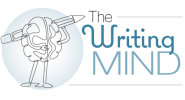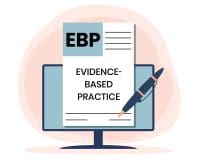On March 9, I attended a virtual conference hosted by the Delaware Chapter of the American Medical Writers Association. I wanted to share some takeaways related to AI from this excellent conference.
Núria Negrão, PhD, presented a short overview of the history of AI, how it works, how to get the most out of it, and resources.
Takeaways:
- AI uses large language models (LLM) that work by predicting the next “token” (word or a phrase).
- You need a good “prompt” when you communicate with LLMs. “Talk” to the AI interface like you’re talking to a person and be specific.
- AI can get things wrong (“hallucinations”). Reasons include that the LLM was trained using data that’s not a good match for the purpose. Because of hallucinations, always verify content accuracy.
- Limited privacy exists for data inputted into AI. Consider that everything you input could be accessed by someone else.
- AI has memory limits. If you’re asking it look at a large amount of data, it may give the wrong answers as it runs out of memory.
- Although it has limits, AI can prove useful for many writing-related tasks, such as classifying, drafting, editing, outlining, optimizing, personalizing, planning, simplifying, summarizing, transcribing, and translating.
- Nothing replaces reading the articles you retrieve on a topic, but having AI create a summary can help you gain a better understanding at the start.
- AI resources to try: Perplexity, Claude, NotebookLM, CoPilot, and Gemini.
Ruwaida Vakil, MSc, led a roundtable on generative AI.
Takeaways:
- Tips for writing a good prompt include the following:
- Be clear and specific; request precise information.
- Make the query neutral.
- Create rules, such as number of words.
- Assign a role (“You are a nurse…”).
- Use iterations to further refine your request: Once you have an answer, you can have a “conversation” to narrow the scope or direction of the response.
AI is here to stay. It can be an excellent tool, but like all tools, we must use it appropriately.


I’ve been a full-time professional nurse writer and editor for many years, and that doesn’t count the writing I did as I fulfilled my nursing roles in clinical, research, education, and management. My passion is helping nurses share their expertise through the written word, including, but not limited to, publication. Writing can be scary and intimidating. I hope to make it less so and to help you develop your writing skills the same way you’ve developed your nursing skills.
Whether you’re considering your first or your 50th publication, want to contribute to your organization’s newsletter, or crave to be a better communicator online and in print, I hope you’ll find what I write helpful. The nurse publishing colleagues I’ve learned from over the years (many of whom are contributors to my book) may not be listed by name, but I’m grateful for their willingness to share. In that spirit, I’m looking forward to sharing with you! If you have feedback, feel free to email me at csaver57@gmail.com.



















